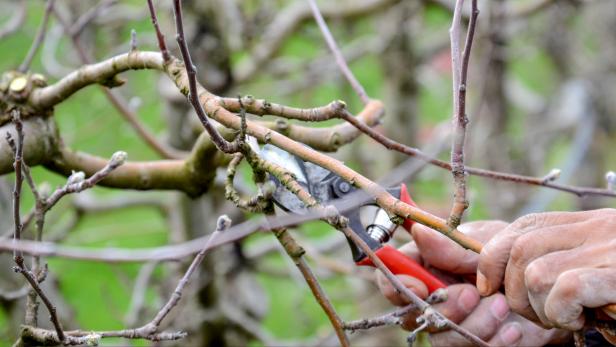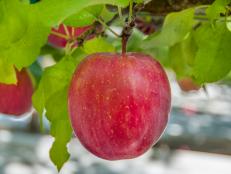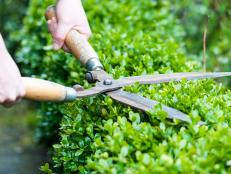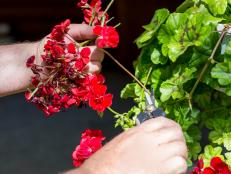Pruning an Apple Tree
Learn how to prune your trees correctly using the steps below.

Shutterstock/agrofruti
Tools and Materials
- pruners
- loppers
- pruning saw
- tape measure
- safety glasses
- leather gloves
- notched sticks, various lengths
Step 1: Know When to Prune
The most important time to prune is late winter, before you see any signs of new growth. Prune off damaged limbs as well as branches that grow too close to the main branches. Thin out crowded and crossing twigs. Choose limbs to form another layer of main structural branches above the previous layers, and remove competing branches. Trim back by two-thirds the new growth at branch ends and from the central trunk (leader).
Step 2: Prune in Summer Too
In midsummer, remove all new shoots that grow straight up or down from the limbs and from the base of the tree. If the main trunk is forked, remove the weaker shoot.
Step 3: Know Where to Cut
Don't randomly shorten branches; remove them all the way to their bases. Make final cuts of 1-inch and larger branches at the branch collar, the raised bark ridges that encircle the base of the branch where it joins the trunk. Don't cut branches flush to the trunk, and don't leave stubs.
Step 4: Know How to Cut
To avoid tearing the bark as you cut through a branch that is too heavy to hold up yourself, divide the cut into three steps. Cut first from the bottom, 6 to 8 inches out from the location of the final cut and half way into the branch. Make the second cut from the top, about an inch further out than the first cut. The branch will break off once this second top cut reaches the area of the first bottom cut, and a stub will remain. Remove the stub in one cut through the branch collar. Prune smaller twigs back to within 1/4 inch of a bud that points in the desired direction, usually toward the outside of the tree.
Step 5: Prune to Train Young Trees
On 2- to 3-year-old trees, remove all branches within 30 to 36 inches of the ground and large branches that grow parallel with the main trunk (central leader) at the top of the tree. Choose three or four well-placed branches spaced evenly around the trunk and 6 to 10 inches apart vertically. Branches should form a wide angle with the trunk (not narrower than 45 degrees). These become your permanent scaffold branches. Prune off the other bThese become your permanent scaffold branches. Prune off the other branches. Do this in late winter while the tree is dormant. In subsequent years, add one or two more layers of scaffold branches, spaced 12 to 15 inches apart.
Step 6: Spread Branches If Needed
Branches that form a 45-degree to 60-degree angle with the trunk produce more fruit and are less likely to break under stress than ones at narrower angles. To widen the angle of otherwise desirable branches, wedge a notched stick between the branch and trunk to spread them apart. Install the spreaders in late winter and remove in late summer.













































